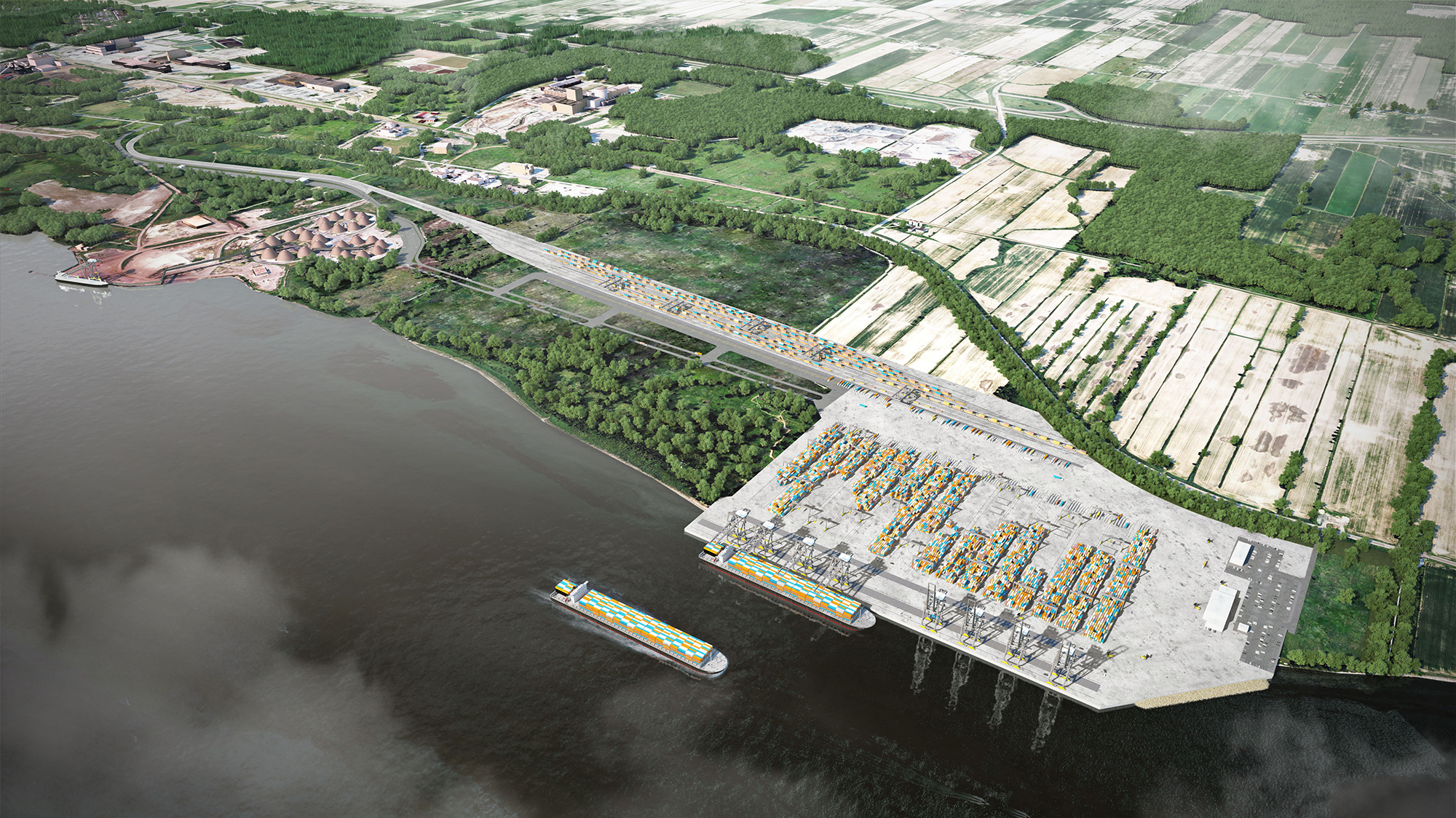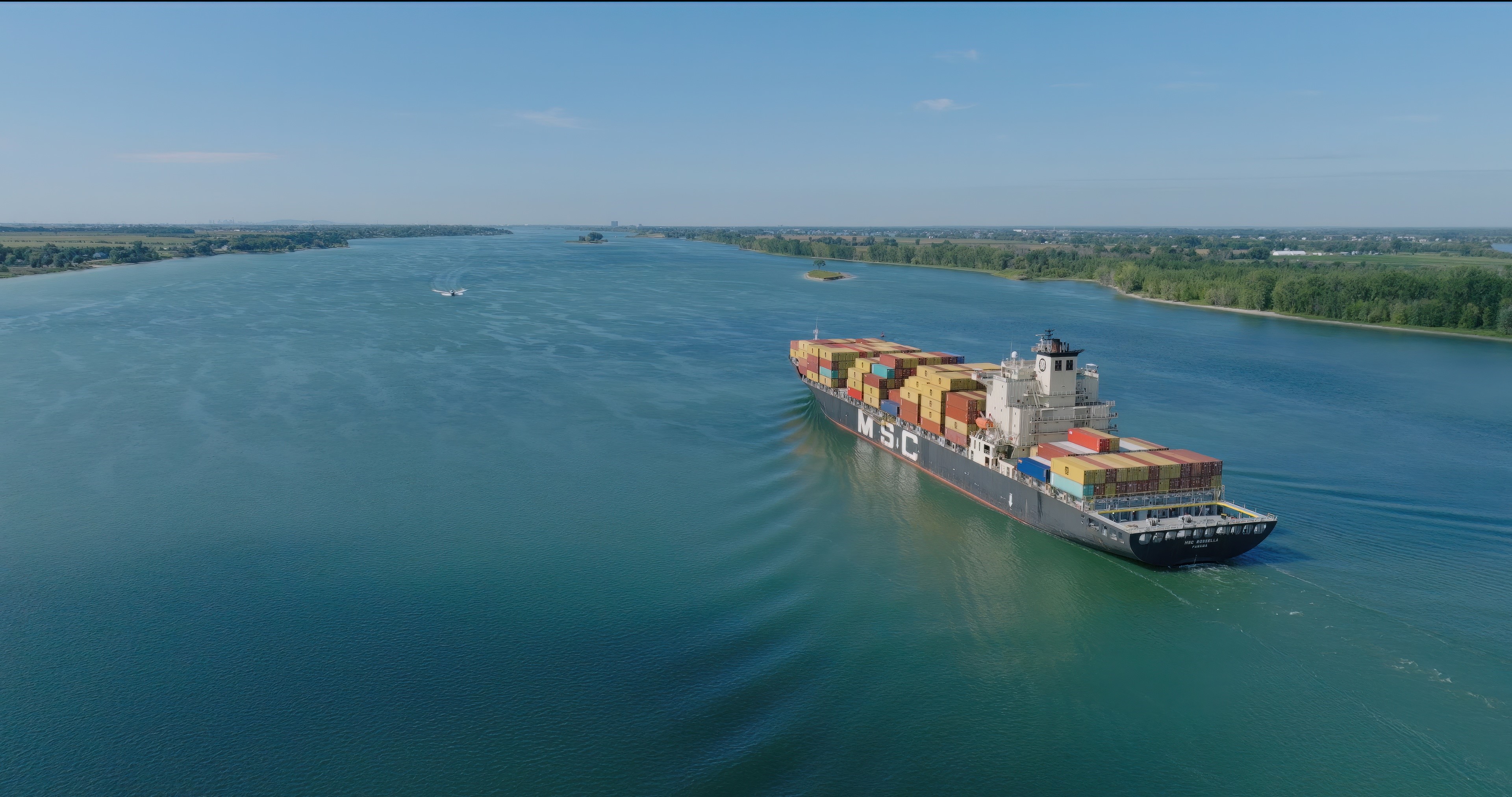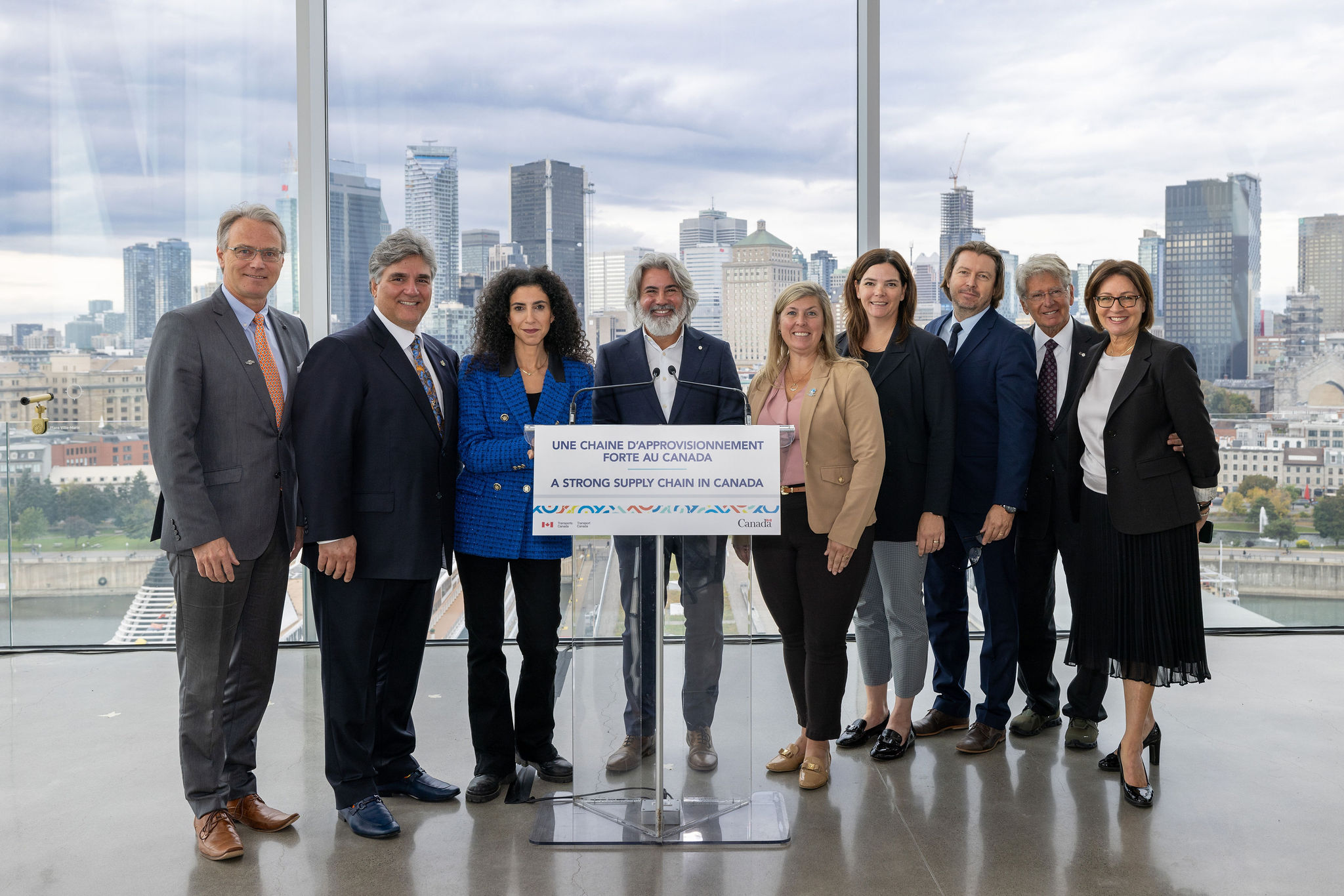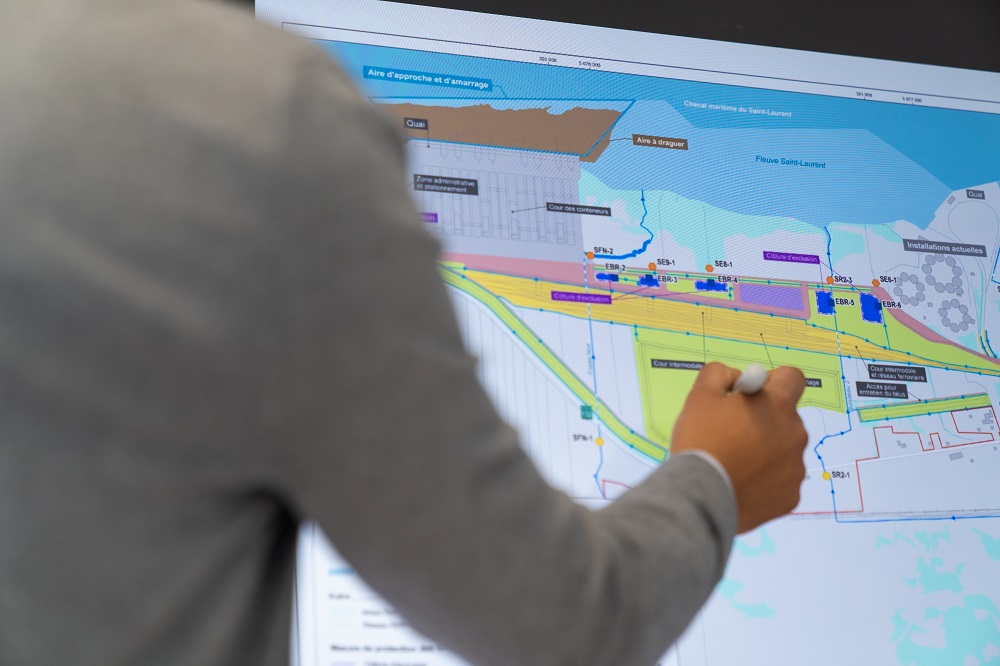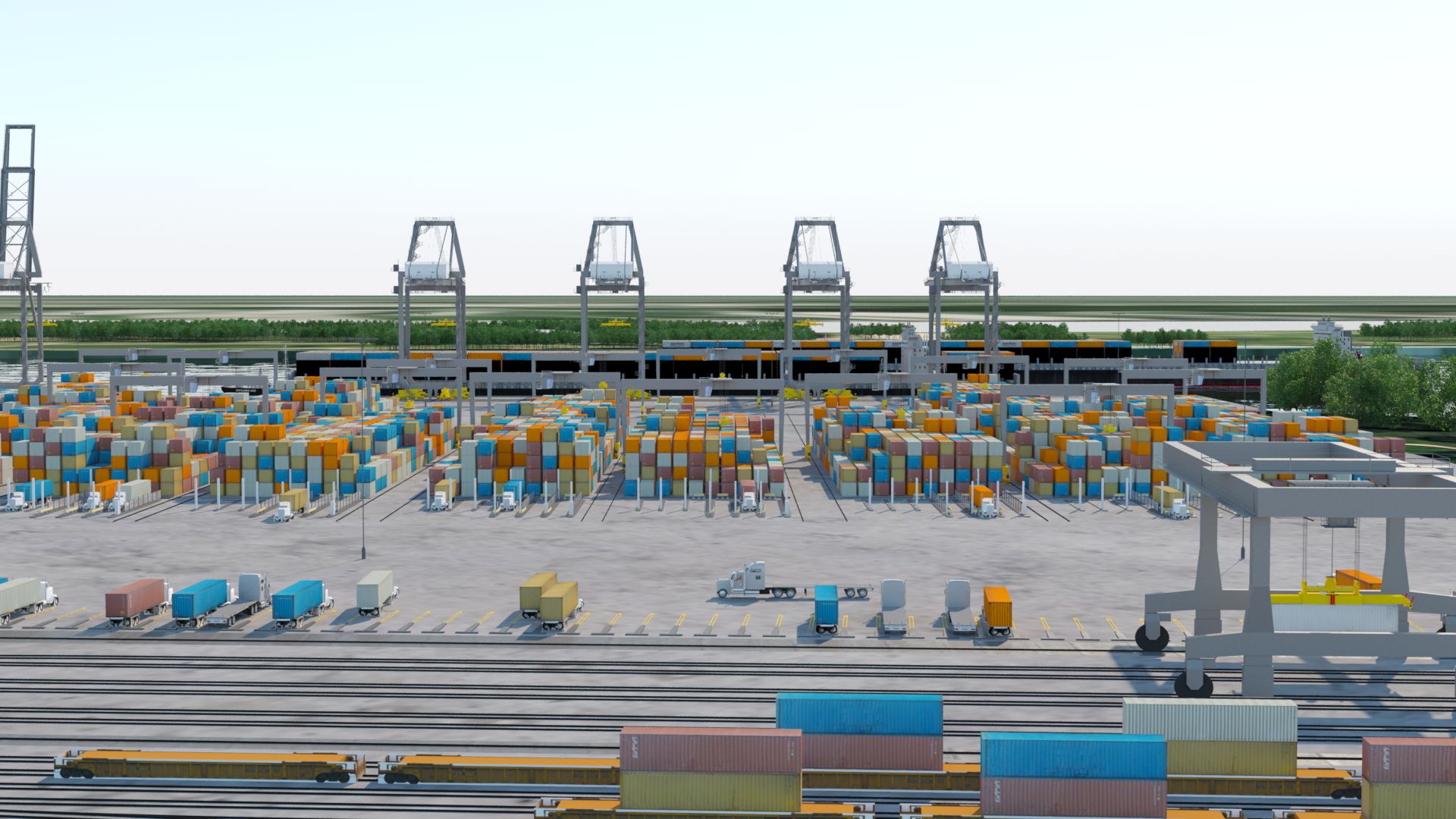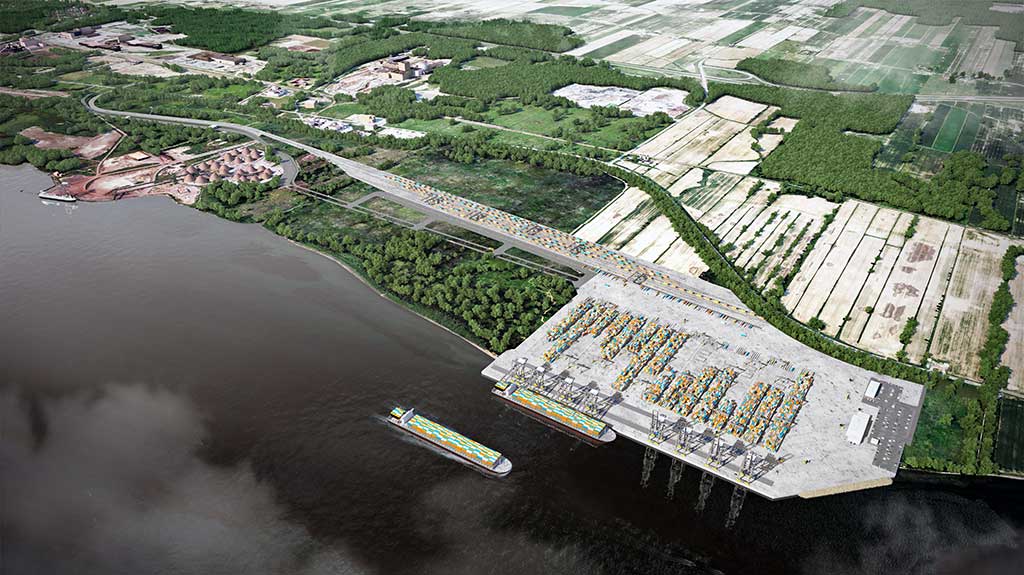Contrecœur Terminal expansion project
About the Contrecœur expansion project
The object of meticulous planning since the late 1980s, the expansion project at Contrecœur calls for new port facilities to be built on land owned by the Government of Canada and managed by the Montreal Port Authority. It is the most ambitious project undertaken by the Montreal Port Authority in recent history.
With several stages already complete, this project will generate substantial economic spinoffs for the South Shore of Montreal as well as Quebec and Canada while improving the resilience of national logistics chains for the benefit of consumers.
Subscribe to the Contrecoeur newsletter
The Contrecoeur expansion project is:
A necessary expansion for importers, exporters and consumers as current Port of Montreal facilities approach full capacity
Economic spinoffs across the country of approximately CAD $140 million per year when it is in operation
Learn more about the project
To learn more about the project, its timelines, its planned environmental measures, its integration with the community or the business opportunities generated by this expansion, please visit the following sections:
Frequently asked questions
What will the Contrecœur expansion mean for Canada and the province of Quebec?
- It is vital to expand the Port of Montreal in Contrecœur to strengthen Canada’s economic security and to support our local businesses in their trade diversification efforts.
- This is a generational project, the equivalent of a new port for Greater Montreal, that will support export growth for businesses, especially those in Quebec and Ontario.
What makes this project continue to be justifiable in today’s market conditions (lower container volumes)?
- Short-term fluctuations in container traffic are normal, but we can expect long-term growth in demand for container handling.
- Given that Canadian exporters are trying to diversify their markets, Contrecœur is key to achieving this goal: if only 6% of Canadian exports bypass the United States for other markets, the Port of Montreal will reach full capacity and need the Contrecœur terminal.
- As construction of the new terminal in Contrecœur is a process that requires several years of planning and labour, we can’t wait until needs become urgent before getting started. Contrecœur must provide additional handling capacity by 2030 to keep up with the growth in needs.
- According to the most recent data from the Port of Montreal, container volumes have grown by an average of 4.5% per year over the last five years, despite cyclical fluctuations related to such factors as the pandemic and trade tensions.
- It is important to plan now for the right infrastructure that will make it possible for local businesses to meet their growing needs in the coming years.
Why should we invest such large sums in the Port of Montreal and not in other port infrastructure across the country?
- Every port in the country must contribute to improving our infrastructure to meet supply chain challenges. For the Port of Montreal, the backbone of this contribution is to increase container-handling capacity, and this will be achieved through the Contrecœur expansion.
- The Port of Montreal’s strategic location makes it a key infrastructure for the entire country. In addition to being the port of Quebec’s largest city, it provides access to markets in more than 140 countries for businesses throughout the province, in Ontario and elsewhere in Canada.
- The Port of Montreal also serves more than 110 million consumers through multimodal corridors.
- We must complete this project to meet growing shipping needs and improve our supply chains. This project will enable us to consolidate the Port of Montreal’s important place in global supply chains for decades to come.
In what way is the Port of Montreal different from other ports in North America?
- The Port of Montreal’s strategic location, so far inland and leading into the Great Lakes, makes it a major infrastructure for the country as a whole. In addition to being the port that serves Quebec’s largest city, it provides access to global markets for the entire province, Ontario and central Canada, along with access to the US Midwest.
Why has the project become urgent?
- The Port of Montreal’s container terminals will reach their full handling capacity within a few years. This makes it mission-critical to deliver a new terminal that will meet the growing demand for containers. Otherwise, terminal congestion will hamper the competitiveness of our businesses and drive up prices for consumers.
- In the current political context, if only 6% of Canadian exports now going to the United States were redirected to other markets, the Port would reach full capacity. This is why we need to invest now to back the diversification of our businesses.
- It takes years to construct this kind of infrastructure. We must start now to be able to meet the future needs of local businesses.
- Considering the economic uncertainty in 2025, with Statistics Canada estimating about 2% growth in national GDP, the project will kickstart the economy by injecting investments to support supply chains, benefiting such key sectors as manufacturing and agri-food.
What would happen if the project does not go forward?
- Without the project, businesses in Quebec and Ontario might eventually turn to competing ports in the United States. This would not only weaken the Canadian supply chain, hurt local economies and put the country’s trade sovereignty at risk, it would also generate more greenhouse gas emissions because cargo would have to take longer land and sea routes.
- Reaching the Port of Montreal’s maximum capacity would increase terminal congestion and transportation costs. This would impact the competitiveness of businesses in Quebec and the rest of Canada and compromise Montreal’s and Quebec’s strategic role in the global shipping supply chain.
Is the project really shovel ready?
- This is a mature project upheld by solid environmental measures that are part of our conditions for implementation, on top of the commitments made by the Port of Montreal.
- The project will be carried out in several phases. The first phase, which consists of preparatory work on the project site (such as targeted tree cutting in the area affected by the work, putting up fences and other related work), is ready to be launched.
What is the lowest annual volume of containers that would have to go through the Contrecœur terminal to make the project economically viable, and when do you expect to reach this volume?
- Forecasts by the Port of Montreal show a minimum break-even point between 300,000 and 500,000 TEUs per year, based on independent economic impact studies. This volume is expected to be gradually reached by 2030-2035, in pace with the growth of trade with Europe and Southeast Asia. This forecast is supported by recent trends in Quebec exports: in the first half of 2025, shipments to the European Union and China rose by 25.9% and 28.7% respectively, reaching $6.2 billion and $2.3 billion, according to data from the Institut de la statistique du Québec (ISQ), analyzed by Les Affaires (in French). At the same time, exports to the United States, our main market, stagnated at $43.8 billion (+1.3% compared to last year). These figures reflect a growing diversification of markets, encouraged by public policies, which could help accelerate the terminal's break-even point.
How will the project contribute to the Canadian economy in 2025, at a time of economic uncertainty?
- The Port of Montreal’s Contrecœur expansion project will first and foremost meet the medium- and long-term shipping needs of the businesses we serve.
- The project will secure supply chains in Quebec and Canada and generate tangible economic benefits. For example, during the construction phase, thousands of jobs will be created.
- In the context of economic uncertainty in 2025, with Statistics Canada estimating Canadian GDP growth at around 2%, the project levers recovery by injecting funds that sustain supply chains.
How many jobs will be created?
- We're talking about 3,770 direct and indirect jobs during the construction phase.
- 10,330 permanent long-term jobs at full capacity.
Has project financing been completed?
- As with every major project, it’s always a challenge to secure full funding.
- To build a generational project in Canada, especially on such a large scale, requires significant investments.
- All levels of government are contributing ($150 million from the federal government and $130 million from the Quebec government), and the Port of Montreal will borrow funds, while private contributions will total several hundred million dollars.
- Private contributions: over $500 million expected.

